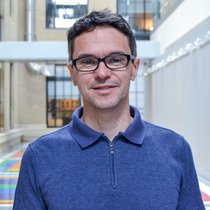But to what extent? Which natural elements do we value most, and does this vary depending on the biome we live in? Dr. Deborah Lefosse (Urbanism) investigated these questions as the principle investigator of a Marie Skłodowska-Curie Actions Fellowship, built on an inter-institutional cooperation. Their paper, Feeling Nature, recently appeared in Nature Partner Journals.
This article was written and originally published by Bouwkunde TU Delft.
Experiencing nature across the globe
Current research recognizes that nature is important in urban areas but often doesn't pinpoint what exactly makes it so impactful. Typically, studies focus on the benefits of green spaces like parks, but their methods are hard to automate and apply everywhere. Also, most studies concentrate on city differences rather than natural differences, which leads to a common oversight: plant blindness. This term describes how people often overlook plants in their daily lives. Deborah: “Ignoring this aspect means we miss out on valuable insights and reduce the emotional impact that nature can have.”
She was part of BIO-POLIS, an EU-funded project involving collaboration between TU Delft, the Amsterdam Institute for Advanced Metropolitan Solutions (AMS), and MIT Senseable City Lab. The team examined how people experience biophilia in urban environments, specifically focusing on human perception of natural elements through the senses and emotions, referred to as 'biophilic perception'. Deborah: “We investigated whether exposure to urban nature evokes universal feelings or if its effects differ across various biomes.” Titus Venverloo, Lead of the MIT Senseable City Lab at AMS adds: “To measure these effects from human-nature interactions, we introduced new biophilic metrics”.
“To measure effects from human-nature interactions, we introduced new biophilic metrics”
Titus Venverloo
Lead, MIT Senseable City Lab Amsterdam & Program Developer
The eight cities in the study with their corresponding biome
“Our maps show that people generally have more positive feelings about nature in city centers, regardless of the actual amount of green spaces”
Dr. Deborah Lefosse

Much more than greenery
The researchers analyzed cities from eight different terrestrial biomes globally. Using images from Google Street View, they first evaluated the amount and variety of natural elements present in these case studies. Then, they assessed the biophilic perceptions: how much the residents value these elements. A visual AI model was trained using surveys from residents of the eight different cities. The results were innovative measurement tools able to quantify, qualify, and map biophilic perception.
The team found that people in forest-rich cities, like Singapore and Amsterdam, enjoy greenery the most. In contrast, in drier cities such as Dubai and Nairobi, residents are more influenced by non-green natural elements like earth, sand, and sky. This indicates a strong correlation between the local environment and biophilic perception. Deborah: “Our maps also show that people generally have more positive feelings about nature in city centers, regardless of the actual amount of green spaces. Additionally, we discovered that the benefits of biophilia are universally experienced, transcending differences in city, biome, or gender.”
Connecting Amsterdam to nature
One of the cities investigated is Amsterdam, which represents the ‘temperate forest’ biome. Compared to other cities, Amsterdam showed stronger biophilic perceptions towards greenery, especially trees typical of forest-based biomes, and water bodies such as canals. This not only highlights the pivotal role of green and blue infrastructure in Amsterdam but also the psycho-physical benefits they contribute to enhancing daily life. These findings align with the goals of Amsterdam's Green Infrastructure Vision 2050, which aims to make the city more liveable for people, plants, and animals.
AI model's visual outputs for Amsterdam city, featured on MIT Senseable City Lab's Feeling Nature webpage
“Implementing AI-driven tools in cities worldwide can significantly enhance urban residents' connection to nature”
Fábio Duarte
Research Scientist
The researchers believe that their work allows us to understand how people perceive urban nature, introducing new ways to measure biophilia. Fábio Duarte from MIT Senseable City Lab: “Implementing AI-driven tools in cities worldwide can significantly enhance urban residents' connection to nature, thereby improving mental health, fostering social cohesion, and promoting environmental sustainability. Additionally, these tools provide data that can help make cities more liveable and better aligned with both human and ecological needs.”
More information
Image in the banner by Deborah Lefosse. The image of the visual AI model is property of MIT Senseable City Lab. Explore the full model by visiting their website.
Read the full publication, titled ‘Feeling Nature: Measuring perceptions of biophilia across global biomes using visual AI’, on the website of Nature.

